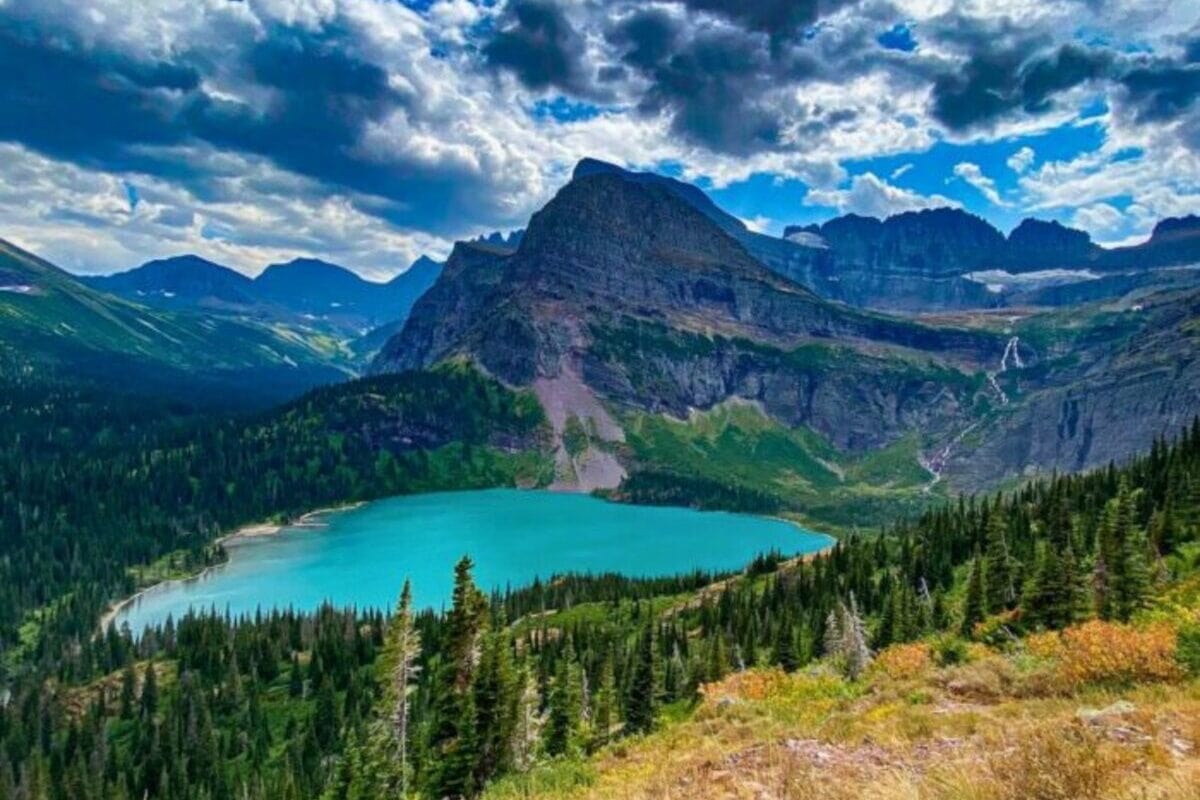Montana is one of the most scenic yet least populated states in the United States. It captivates with its rugged natural beauty, vast open spaces, and diverse wildlife. Every year, millions of tourists visit to admire the mountainous landscapes, crystal-clear lakes, and countless hiking trails. These interesting facts about Montana will help you better understand its history, significance, and unique atmosphere. In this selection, you’ll discover many fascinating things you might not know.
- The name Montana comes from Spanish and means mountainous land. This is a fitting description, as the western part of the state is covered by the Rocky Mountains. The mountain landscapes dominate and influence both the local climate and ecosystems.
- Montana has over 300 peaks that exceed 3,000 meters in elevation. The highest point is Granite Peak. Snow can remain on these peaks for much of the year.
- Glacier National Park, one of the largest national parks in the U.S., is located in Montana. It contains over 130 lakes and thousands of plant and animal species. The park is famous for its glaciers, steep cliffs, and breathtaking valleys.
- Montana borders three Canadian provinces: Alberta, British Columbia, and Saskatchewan. It has the longest border with Canada of any U.S. state. This makes it a vital region for trade and international relations.
- Although Montana ranks fourth in the U.S. in terms of area, its population is only around one million. The population density is very low. Open space and a sense of freedom are everyday realities here.
- Cattle ranching plays a major role in Montana’s economy. The number of cows far exceeds the number of residents. Many families have owned and operated their ranches for generations.
- Montana is rich in natural resources such as gold, silver, copper, and coal. During the 19th century, it attracted gold prospectors from all over the country. Many old mining towns have now become tourist attractions.
- On certain rural roads in Montana, there are no posted speed limits. Drivers are expected to act with reasonable and prudent judgment. Such regulations are rare in the United States.
- Numerous westerns and frontier-themed films have been shot in Montana. Its vast prairies and mountainous backdrops perfectly reflect the spirit of the Wild West. The region continues to attract filmmakers today.
- Some of the largest nuclear missile silos in the U.S. are located in Montana. Most of them are hidden underground. These facilities are heavily guarded and not open to the public.
- The bison is a symbolic animal of Montana. You can see them in reserves and national parks. Several conservation programs are active in the state to protect the species.
- One of the local culinary specialties is a meat-filled pastry inspired by British pasties. This dish was brought over by early miners. Today, it is often served at festivals and fairs.
- The Missouri River, the longest river in the United States, originates in Montana. It begins near the town of Three Forks. It flows through several states before joining the Mississippi River.
- The state capital, Helena, is one of the smallest state capitals in the U.S. It has a population of about 30,000. The city has preserved many historical buildings from the gold rush era.
- Montana’s clean air and low light pollution make it ideal for stargazing. The Milky Way can be seen with the naked eye. Sky watchers and astrophotographers especially treasure this area.
- The eastern part of the state is rich in paleontological finds. Numerous dinosaur fossils have been unearthed here. The Museum of the Rockies in Bozeman has one of the best dinosaur fossil collections in the country.
- The University of Montana, located in Missoula, is highly regarded. It is known for programs in environmental studies, journalism, and forestry. It attracts students from all over the world.
- Rodeo festivals are held every year across Montana. Cowboys, ranchers, and professional riders participate in these events. Rodeo remains a vital part of the state’s cultural heritage.
- Montana is home to Native American reservations inhabited by tribes such as the Sioux, Cree, and Blackfeet. The state government supports efforts to preserve their languages and traditions. Some schools even offer classes in indigenous culture.
- Montana is a paradise for outdoor enthusiasts. Fishing, hiking, and winter sports draw large numbers of visitors. Many fall in love with the state and decide to settle there permanently.
These interesting facts about Montana reveal just how remarkable and diverse this state is. It is a place filled with history, nature, and cultural richness. Montana captivates everyone from nature lovers to culture seekers. It is undoubtedly one of the states worth learning more about.





